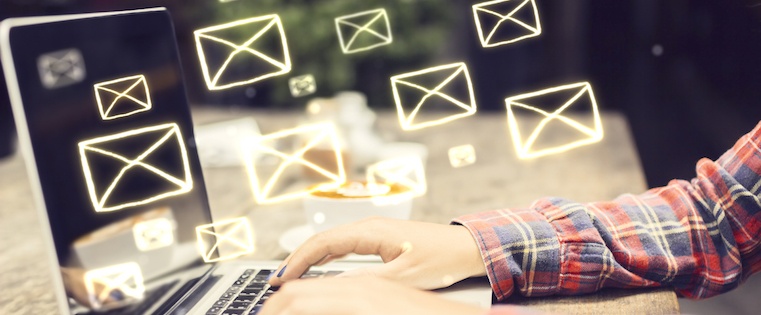

When the term 'Email Marketing' is mentioned, everyone seems to think they know about it but most often, it's 'email blast' that they talk about.
What is Email Blast?
Creating a list of email addresses, designing a proper email and sending it to them all is called 'email blast'. Email Blast is the traditional way of sending an email to a huge number of email ids on the list and then expect the interested ones to respond back but truly speaking, Email blast doesn't really have any proper strategy.
A lot of companies undermine the value of Email Marketing because they tend to think of Email Marketing as a medium that blasts emails. Email Marketing is still one of the most powerful digital marketing mediums and accounts for lesser cost per acquisitions than most other channels, including social media, direct mail, paid search and display networks.
Email marketing has evolved and needs to be automated for better conversions.
1. Integrate Email marketing into the buyer's journey
Inbound marketing starts with creating your ideal buyer personas. Buyer persona is the fancy word for the semi-fictional representation of your ideal customer based on market research and data about your existing customers. The landing pages are usually optimized for the requirements of the buyer persona i.e. your ideal buyer types.
The majority of websites happen to capture leads and let's go through the process. Once the person fills in the form and gives your company their details, then the lead has to nurtured to ensure they are qualified for a sale. This is where email marketing comes into play. Sending them educational content using email marketing campaigns, which are fully automated, is an effective way of building trust and nurturing the leads. Optimizing and activaating the campaigns make it an effective way to deliver the right content to the different buyer persona.
Never forget that it is easier to sell to a current customer than a new one. Keeping the current lot happy must be top priority. Always communicate with the existing customer base through automated campaigns for feedback, address shortcomings, plus keep them updated with offers and promotion. Email campagins can be a potent option to grow your business when used effectively.
2. Concentrate on improving the conversion rate
The purpose of email marketing when targeting leads is to qualify them to eventually make a sale. The success of the email marketing campaign should be rightly defined the high conversion rate.
A/B testing would let you to see which content, layout and design are performing better.
Monitor the bounce rates, open rates and click through rates to find out which campaigns are performing well.
Use captivating titles and clearly defined Call to Action Areas.
Check if your emails are responsive in various devices and screen sizes.
3. Segment your list and personalize the content
People are going to be at different stages of the buyer's journey and the same content is not going to suit two leads - one at an advanced stage in the marketing funnel and some one at the initial stage of the funnel. Plus factor in the different variables like designation, industry and market. This is where list segmentation can be used to great effect. You can segment your list based on job title, engagement level and known parameters.
List segmentation can be used to deliver highly personalized emails that would be educational to he lead. Personalization doesn't mean you have to only address your lead with their name but also send relevant content that suits their requirements.
If you manage to segment yur lists right, your leads will receive the content they would be interested in, and this would eventually increase the chance of a conversion. List Segmentation will reduce the number of unsubscribes and help your emails avoid spam filters, in addition to increasing your open and click through rates.

Deepak founded VizConn in 2011 at the age of 17 and currently serves as the Principal Consultant, leading the charge on CMS and AI adoption for clients across APAC, EU, and NA regions. Let us know and we will pass it on to him. He responds to most questions via email.